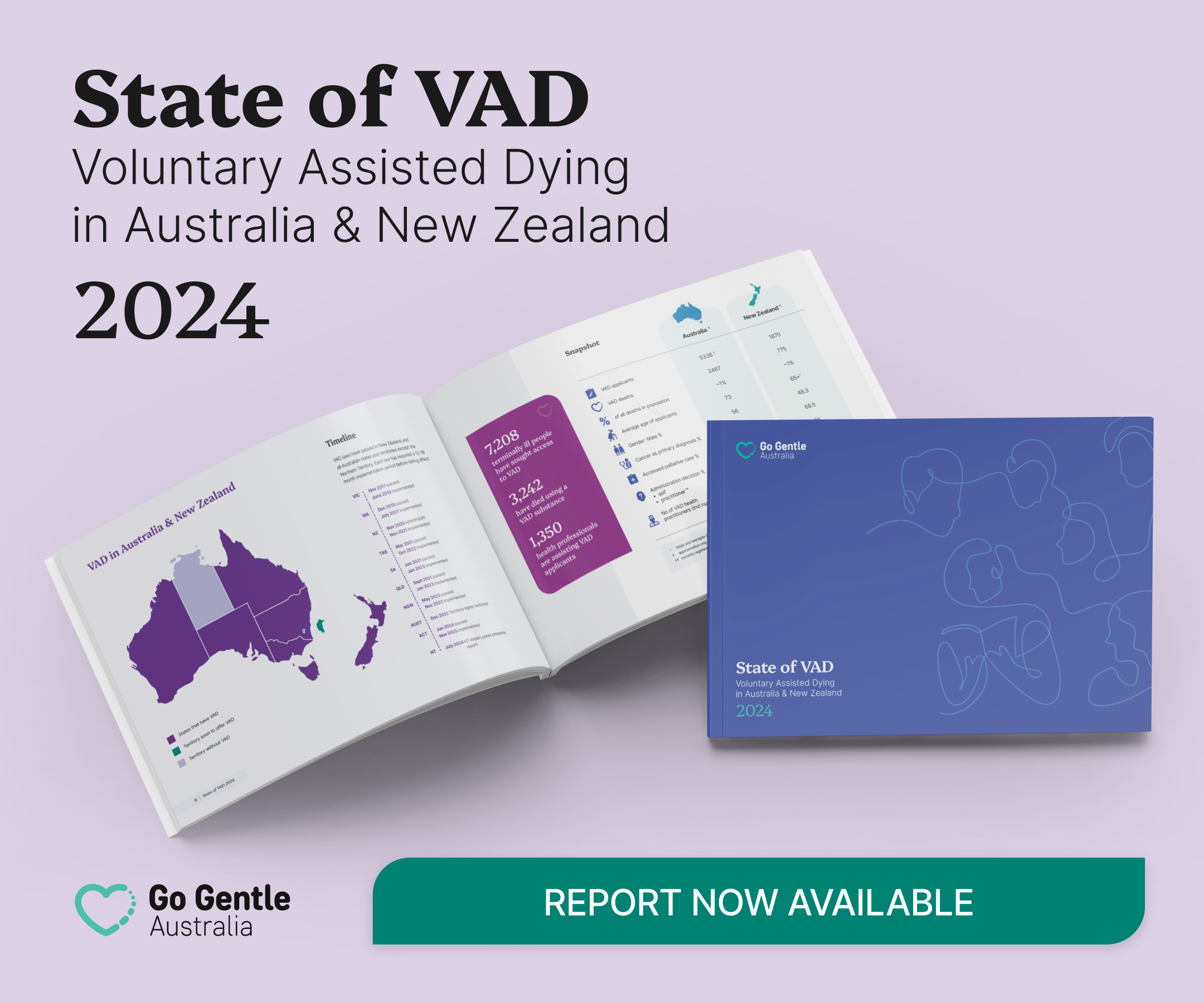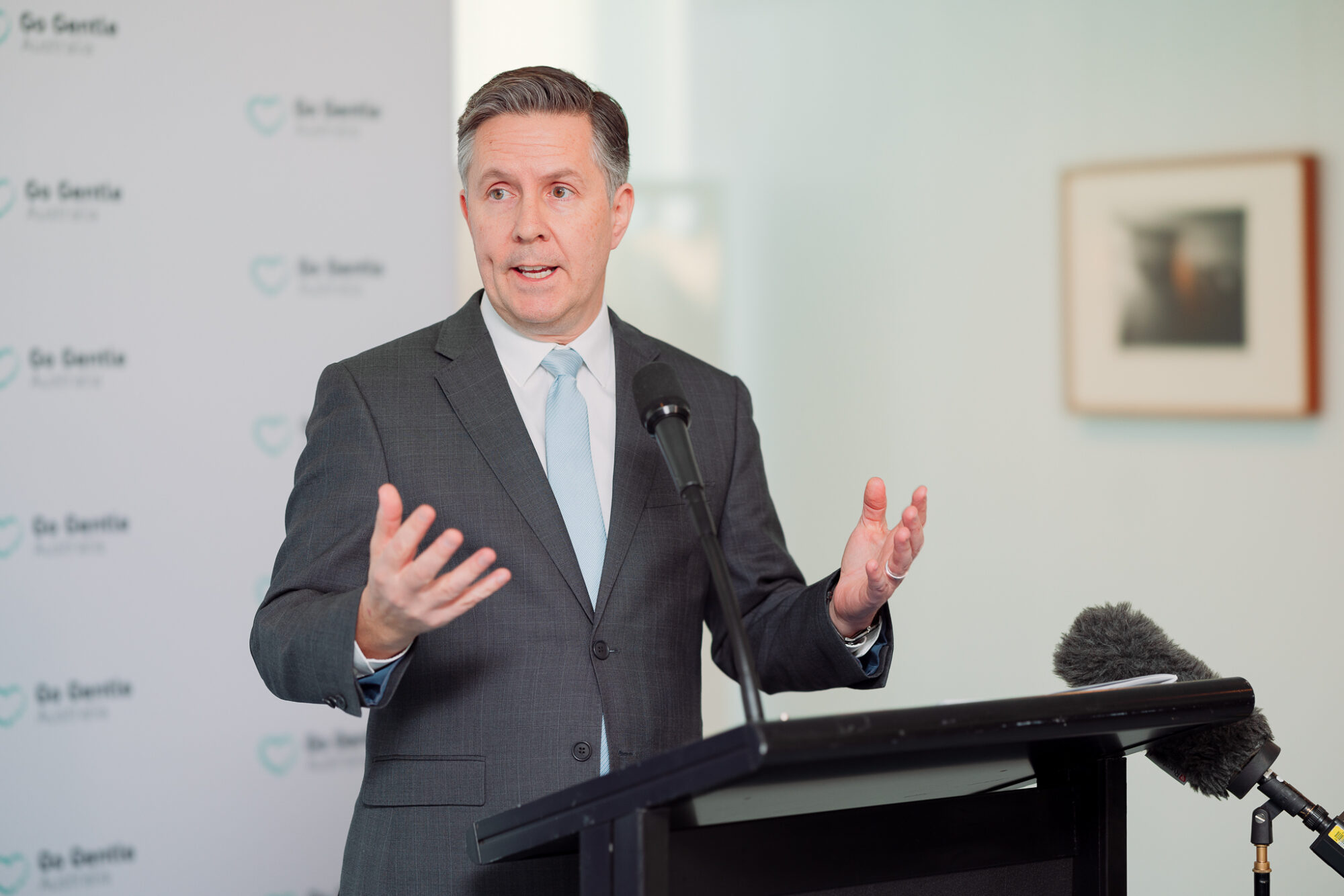The voluntary assisted dying health workforce needs to grow to meet demand and fair compensation for practitioners is essential, a report into VAD in Australia and New Zealand has found.
There are about 1200 trained health professionals now working in VAD across the two countries.
More than 7200 terminally ill people in Australia and New Zealand have applied for VAD and 3242 have died using a VAD substance, since 2019.
VADANZ president Cam McLaren, responding to Go Gentle Australia’s State of VAD report, said a funding shortfall for VAD providers risked the sustainability of services.
“It is a top priority for VADANZ that health professionals are adequately remunerated for their VAD work. We know some VAD practitioners are working in their own time, receiving little or no financial compensation and that is not sustainable.”
Feedback from the trans-Tasman Voluntary Assisted Dying conference held last year found remuneration was among the top three issues identified by practitioners.
In Australia, the Medical Benefits Schedule (MBS) still retains a general explanatory note that ‘euthanasia and any service directly related to the procedure’ will not attract Medicare benefits.
However in New Zealand, comprehensive funding has been available to VAD practitioners since their law’s inception.
Go Gentle CEO Dr Linda Swan said New Zealand had twice as many doctors per head of population than Australia, but there were still more needed there as well.
“[Practitioners say] ‘pay us fairly’. The work is great. They love it. It’s amongst the most rewarding work they’ve ever done,” Dr Swan said.
“But it’s hard…and it’s even harder when you’re doing a lot of it for free or pro bono. So we have to fix the way health professionals are remunerated.”
The report notes that Australian jurisdictions are responding with their own funding solutions.
A new practitioner funding package has been initiated in Western Australia and will be implemented in 2024-2025.
NSW has put funding models in place with local health districts to resource central coordination and remuneration of VAD practitioners, including GPs engaged by the district.
However the report notes, “The current piecemeal funding available across jurisdictions is undesirable. Queensland’s VAD Review Board has recommended a uniform approach to enable equitable remuneration to support a sustainable workforce. MBS provision to allow GPs to claim against existing item numbers would go some way to address concerns, alongside state funding provision.”
 The State of VAD report collates and analyses available VAD data for the first time, presenting a snapshot of VAD in practice; who is using the laws and what can be improved.
The State of VAD report collates and analyses available VAD data for the first time, presenting a snapshot of VAD in practice; who is using the laws and what can be improved.
Although VAD deaths represented about 1 percent of all deaths, demand for services was growing, the report noted.
Data from jurisdictions that have published annual reports show that around 60 per cent of VAD-trained doctors go on to care for VAD applicants.
Aside from fair remuneration of practitioners, a number of other reforms are recommended to further improve VAD access, including:
- Streamline complex bureaucratic processes
- Recognise VAD as part of high-quality end-of-life care and include it in clinical standards and guidelines
- Produce clear guidance to individual practitioners, hospitals, hospices and aged care facilities about their legal and ethical obligations to the people in their care
- Provide culturally safe resources and services for First Nations peoples and those from culturally and linguistically diverse backgrounds.
The report includes a joint statement from health organisations including VADANZ, calling on the government to reform the Commonwealth Criminal Code where it restricts VAD access for rural and remote Australians.
Greater awareness of VAD was also essential, said Dr Swan.
“So-called ‘gag clauses’ in Victoria and South Australia prevent health professionals from raising the topic with patients. No other health care requires patients to know their treatment options before consulting a doctor. It runs contrary to person-centred and informed care.”
Minister for Health and Aged Care Mark Butler, speaking at the report launch at Parliament House, said VAD represented a ‘sea change’ in end-of-life care, and revealed important insights into VAD practice. One significant statistic showed 80 percent of VAD applicants had also accessed palliative care.
“That idea, which I remember hearing on countless occasions, that there was a binary between palliative care and voluntary assisted dying is dispelled in this report,” Mr Butler said.
Read the State of VAD report.
